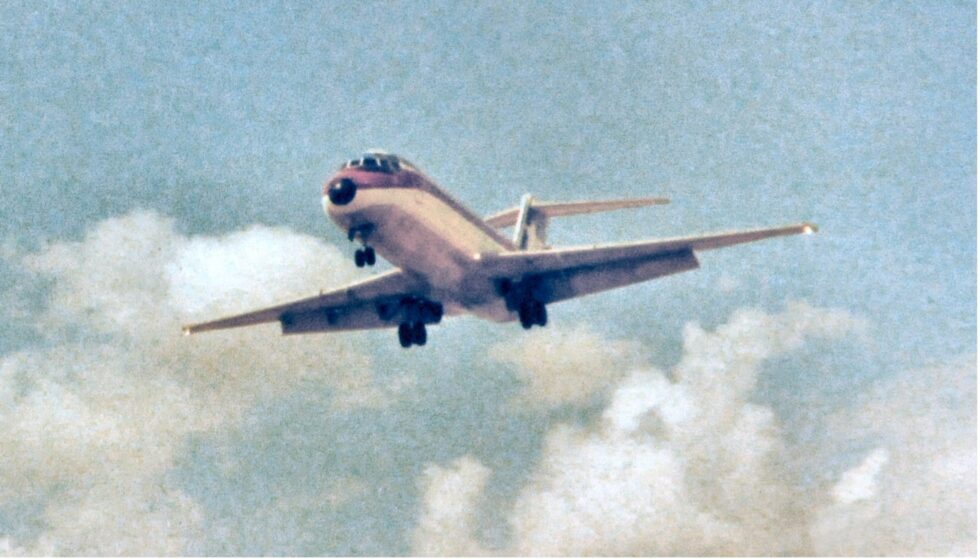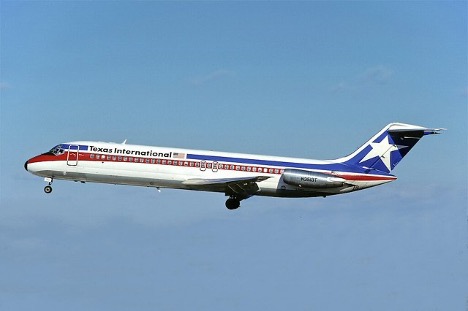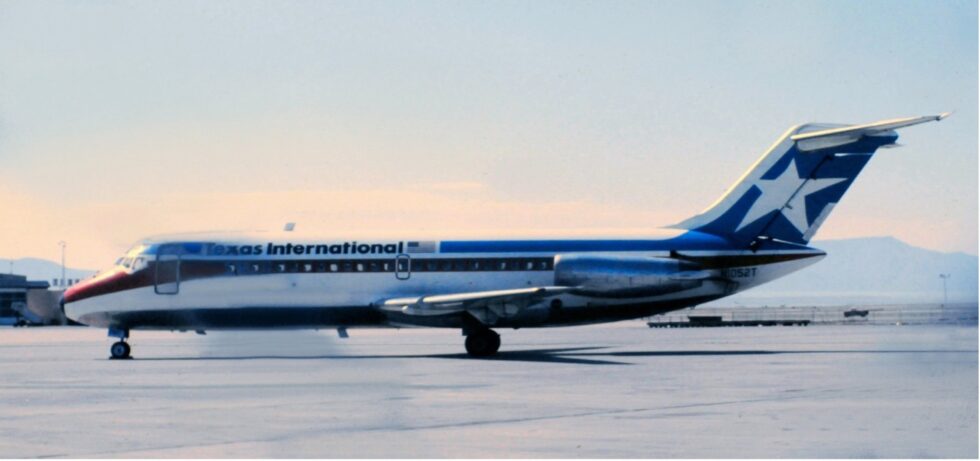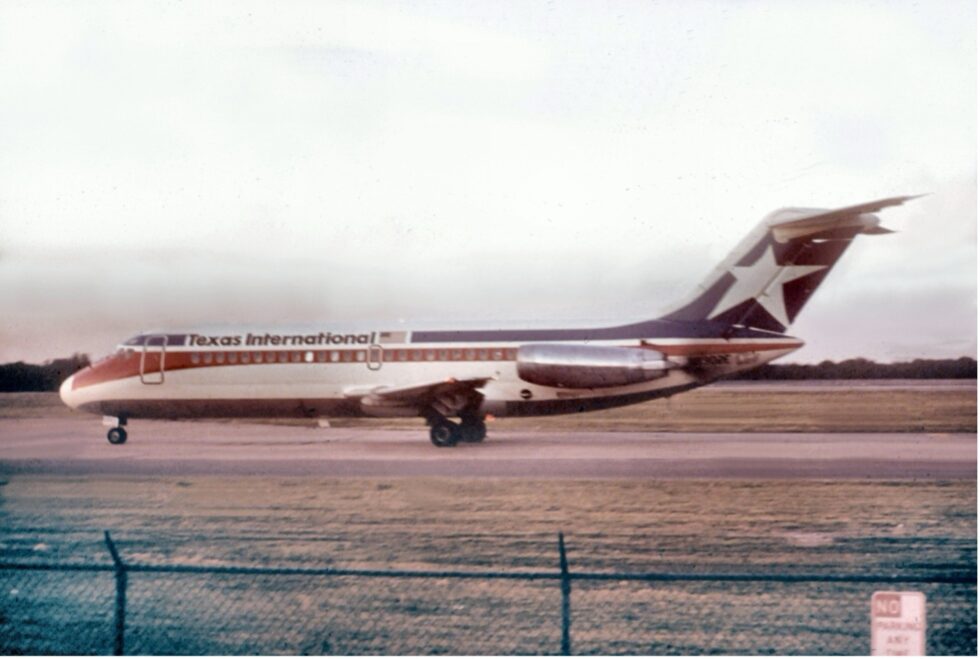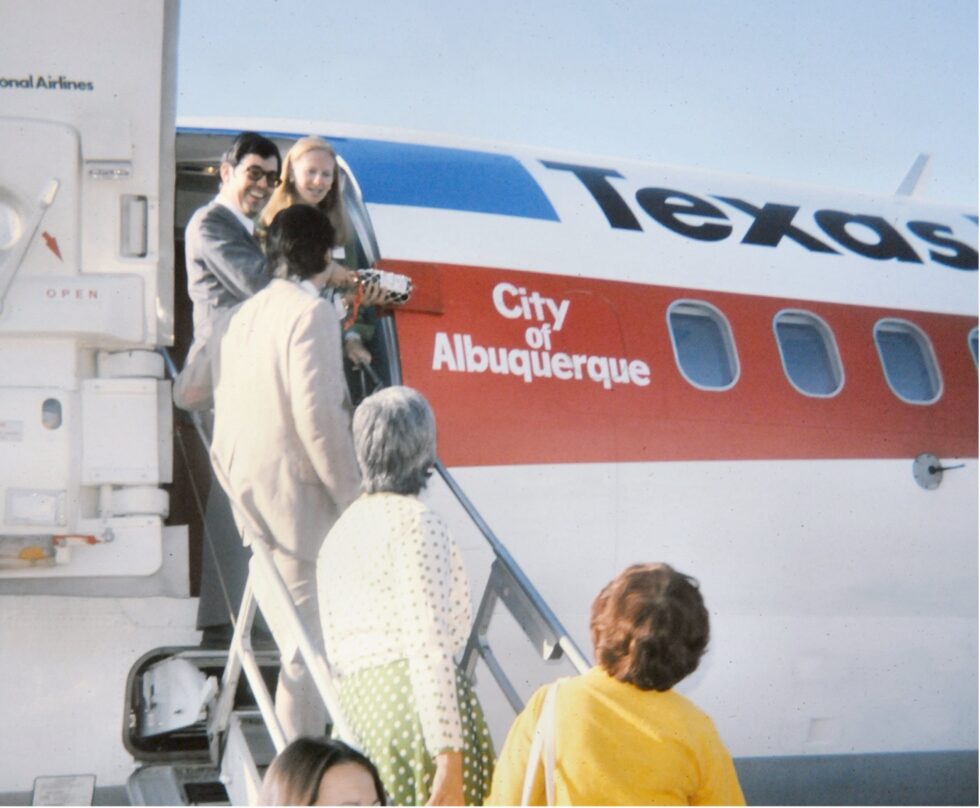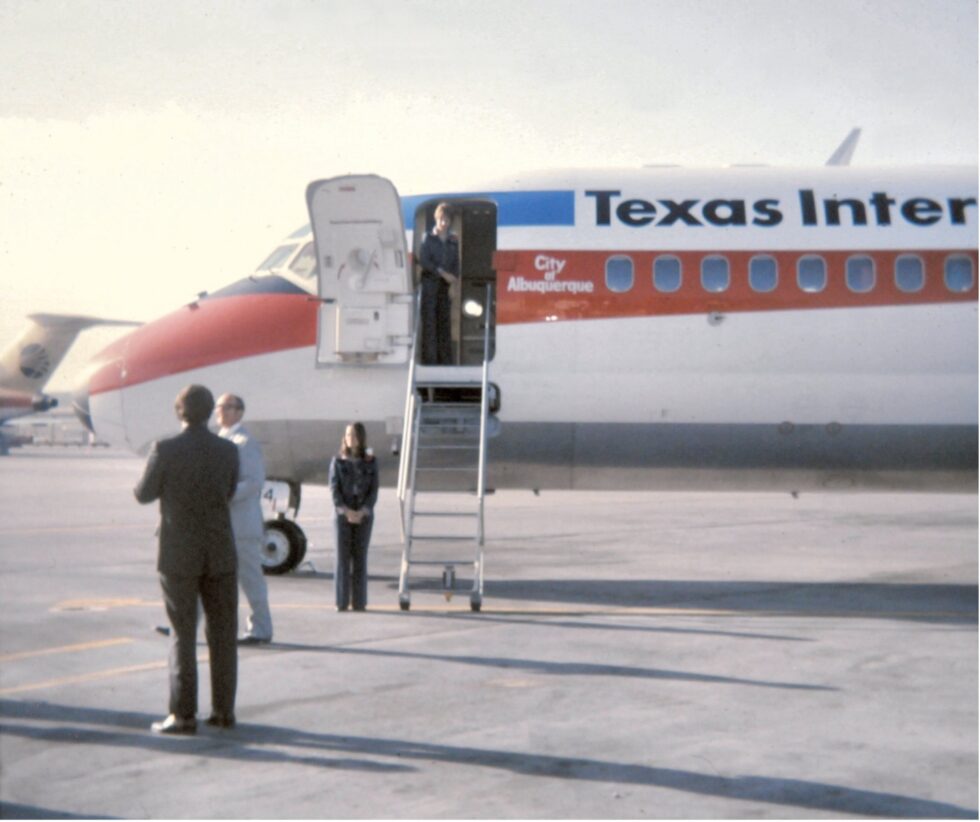Texas Int’l Douglas DC-9-30 City of Albuquerque
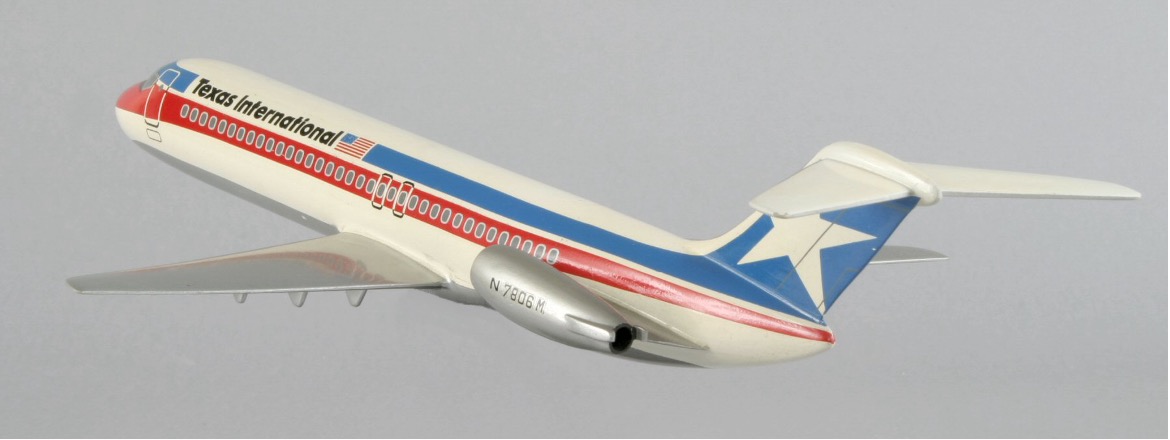
MODEL BY:
Texas International Airlines
Model Scale:
1/100
MODEL ADDED:
04/17/1974
historical significance
First Albuquerque Visit: 1974
Additional Information:
The Douglas DC-9 is an American five-abreast, single-aisle aircraft designed by the Douglas Aircraft Company. It was initially produced as the Douglas DC-9 prior to August 1967, after which point the company had merged with McDonnell Aircraft to become McDonnell Douglas. In 1959, Douglas was interested in producing an aircraft suited to smaller routes. Approval for the DC-9, a smaller all-new jetliner, came on April 8, 1963. The DC-9-10 first flew on February 25, 1965, and gained its type certificate on November 23, 1965. The Series 30 was produced to counter Boeing’s 737 twinjet and 662 models were eventually built after the -30 entered service in February 1967.
The DC-9 is powered by two rear-mounted Pratt & Whitney JT8D low-bypass turbofan engines under a T-tail. It has a two-person flight deck and built-in airstairs to function better at smaller airports. The Series 10 aircraft typically have up to 90 coach seats.
The DC-9 family is one of the longest-lasting aircraft in production and operation. Beginning in 1965, the DC-9 was first produced on the final assembly line in Long Beach, California and then later was on a common line with the second generation of the DC-9 family, the MD-80. Following the delivery of 976 DC-9s and 108 MD-80s, McDonnell Douglas stopped production of the DC-9 in December 1982. The last member of the DC-9 family, the Boeing 717, was manufactured until 2006 and a total 2441 aircraft were produced.
Trans Texas Airways began in 1944 as Aviation Enterprises based in Houston and serving routes within the state of Texas. The name was changed to Trans Texas Airways (TTA) and operations officially began on October 11, 1947. Service to Albuquerque, Santa Fe, and southeastern New Mexico began on October 15, 1963 or November 6, 1963. The airline first operated all flights with 21-seat Douglas DC-3 aircraft but soon upgraded with 40-seat Convair 240’s which were later modified into Convair 600’s. By 1967 TTA introduced jet service with the 75-seat Douglas DC-9 and operated the aircraft on an Albuquerque-Santa Fe-Dallas-Houston route. The carrier’s name was changed to Texas International (TI) in 1969 and new route authority from Albuquerque to Los Angeles and nonstop to Dallas was introduced as well a larger 100-seat version of the DC-9 designated as the DC-9-30. Texas International’s parent company, Texas Air, bought out Continental Airlines and the two carriers merged on October 31, 1982 with the Continental name prevailing and ending 19 years of service for TTA/TI in New Mexico.
When Trans-Texas Airways changed their name to Texas International Airlines in 1969 they introduced a new purple/grey/white livery to their DC-9 aircraft. The airline also introduced a longer version of the aircraft, the DC-9-30, at the time.
In June of 1973, Texas International Airlines revised their color scheme to a red, white, and blue livery with a white “Lone Star” on the tail replacing their former purple, grey, and white livery. Texas International named one of their DC-9-30 aircraft, N3504T, the “City of Albuquerque”.
The Texas International Douglas DC-9-30 “City of Albuquerque” is seen taxiing after arrival at the Albuquerque Sunport.
GALLERY:
SEARCH OUR DATABASE:

